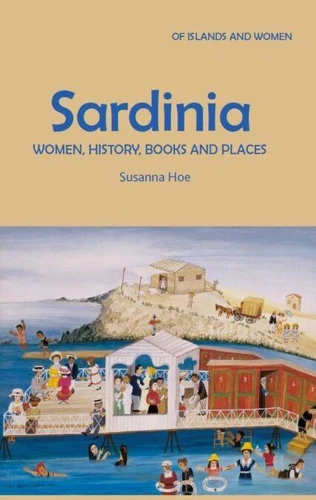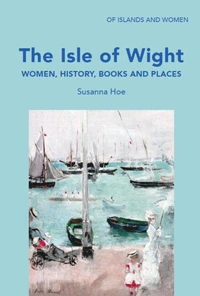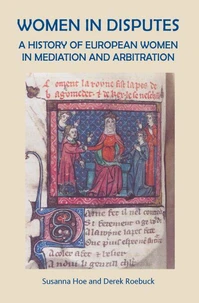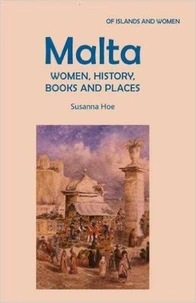Sardinia: Women, History, Books and Places. Women, History, Books and Places, #2
Par :Formats :
Disponible dans votre compte client Decitre ou Furet du Nord dès validation de votre commande. Le format ePub est :
- Compatible avec une lecture sur My Vivlio (smartphone, tablette, ordinateur)
- Compatible avec une lecture sur liseuses Vivlio
- Pour les liseuses autres que Vivlio, vous devez utiliser le logiciel Adobe Digital Edition. Non compatible avec la lecture sur les liseuses Kindle, Remarkable et Sony
 , qui est-ce ?
, qui est-ce ?Notre partenaire de plateforme de lecture numérique où vous retrouverez l'ensemble de vos ebooks gratuitement
Pour en savoir plus sur nos ebooks, consultez notre aide en ligne ici
- FormatePub
- ISBN8230958796
- EAN9798230958796
- Date de parution27/03/2025
- Protection num.pas de protection
- Infos supplémentairesepub
- ÉditeurIndependently Published
Résumé
Marianna Bussalai, the poet and anti-Fascist activist of the Barbagia region, wrote that she felt humiliated at school 'wondering why, in the history of Italy, Sardinia was never mentioned. I deduced that Sardinia was not Italy and had to have a separate history'. It is not surprising that islands tend to be different from the country to which they are in some way attached. But Sardinia's personality differs even more from that of Italy than one might expect.
This book explores that difference through the island's women. Sardinia has been inhabited for longer than many European countries; of its earlier peoples, the best-known are the pre-historic Nuraghic. The hundreds of tall and mysterious megalithic towers which still grace the landscape are the most outward distinctive remnants of their civilisation. But it is from the myriad and tantalising clay statuettes found in ritual wells that it is possible to suggest aspects of women's lives.
These are now in archaeological museums, such as that of Cagliari; many of the wells still exist. There followed invasions, colonisations and settlements - often bringing women exiles or landowners - by Phoenicians, Carthaginians, Romans, Muslims, Catalans, Genoese, Pisans, Spaniards and Savoyards, until finally the island became part of a united Italy, But, as the Swede Amelie Posse-Brazdova, sentenced to exile in Alghero during the First World War, was to write, 'For many centuries the Sardinians had been so fooled and exploited by the Italians, especially the Genoese merchants, that in the end they began to look upon them as their worst enemies.'However much that enmity is now little evident, Sardinia is still very much its own place, with its own languages.
This is true of Alghero with its distinctive aura of Catalan occupation, of Marianna Bussalai's always intransigent Barbagia, and of Oristano where perhaps Sardinia's only well-known historical woman, Eleanora d'Arborea, ruled as Giudicessa in the fourteenth century. Although still particularly revered, she epitomised the strong and advanced women, from peasants to political activists, who emerge here from those often turbulent centuries.
This book explores that difference through the island's women. Sardinia has been inhabited for longer than many European countries; of its earlier peoples, the best-known are the pre-historic Nuraghic. The hundreds of tall and mysterious megalithic towers which still grace the landscape are the most outward distinctive remnants of their civilisation. But it is from the myriad and tantalising clay statuettes found in ritual wells that it is possible to suggest aspects of women's lives.
These are now in archaeological museums, such as that of Cagliari; many of the wells still exist. There followed invasions, colonisations and settlements - often bringing women exiles or landowners - by Phoenicians, Carthaginians, Romans, Muslims, Catalans, Genoese, Pisans, Spaniards and Savoyards, until finally the island became part of a united Italy, But, as the Swede Amelie Posse-Brazdova, sentenced to exile in Alghero during the First World War, was to write, 'For many centuries the Sardinians had been so fooled and exploited by the Italians, especially the Genoese merchants, that in the end they began to look upon them as their worst enemies.'However much that enmity is now little evident, Sardinia is still very much its own place, with its own languages.
This is true of Alghero with its distinctive aura of Catalan occupation, of Marianna Bussalai's always intransigent Barbagia, and of Oristano where perhaps Sardinia's only well-known historical woman, Eleanora d'Arborea, ruled as Giudicessa in the fourteenth century. Although still particularly revered, she epitomised the strong and advanced women, from peasants to political activists, who emerge here from those often turbulent centuries.
Marianna Bussalai, the poet and anti-Fascist activist of the Barbagia region, wrote that she felt humiliated at school 'wondering why, in the history of Italy, Sardinia was never mentioned. I deduced that Sardinia was not Italy and had to have a separate history'. It is not surprising that islands tend to be different from the country to which they are in some way attached. But Sardinia's personality differs even more from that of Italy than one might expect.
This book explores that difference through the island's women. Sardinia has been inhabited for longer than many European countries; of its earlier peoples, the best-known are the pre-historic Nuraghic. The hundreds of tall and mysterious megalithic towers which still grace the landscape are the most outward distinctive remnants of their civilisation. But it is from the myriad and tantalising clay statuettes found in ritual wells that it is possible to suggest aspects of women's lives.
These are now in archaeological museums, such as that of Cagliari; many of the wells still exist. There followed invasions, colonisations and settlements - often bringing women exiles or landowners - by Phoenicians, Carthaginians, Romans, Muslims, Catalans, Genoese, Pisans, Spaniards and Savoyards, until finally the island became part of a united Italy, But, as the Swede Amelie Posse-Brazdova, sentenced to exile in Alghero during the First World War, was to write, 'For many centuries the Sardinians had been so fooled and exploited by the Italians, especially the Genoese merchants, that in the end they began to look upon them as their worst enemies.'However much that enmity is now little evident, Sardinia is still very much its own place, with its own languages.
This is true of Alghero with its distinctive aura of Catalan occupation, of Marianna Bussalai's always intransigent Barbagia, and of Oristano where perhaps Sardinia's only well-known historical woman, Eleanora d'Arborea, ruled as Giudicessa in the fourteenth century. Although still particularly revered, she epitomised the strong and advanced women, from peasants to political activists, who emerge here from those often turbulent centuries.
This book explores that difference through the island's women. Sardinia has been inhabited for longer than many European countries; of its earlier peoples, the best-known are the pre-historic Nuraghic. The hundreds of tall and mysterious megalithic towers which still grace the landscape are the most outward distinctive remnants of their civilisation. But it is from the myriad and tantalising clay statuettes found in ritual wells that it is possible to suggest aspects of women's lives.
These are now in archaeological museums, such as that of Cagliari; many of the wells still exist. There followed invasions, colonisations and settlements - often bringing women exiles or landowners - by Phoenicians, Carthaginians, Romans, Muslims, Catalans, Genoese, Pisans, Spaniards and Savoyards, until finally the island became part of a united Italy, But, as the Swede Amelie Posse-Brazdova, sentenced to exile in Alghero during the First World War, was to write, 'For many centuries the Sardinians had been so fooled and exploited by the Italians, especially the Genoese merchants, that in the end they began to look upon them as their worst enemies.'However much that enmity is now little evident, Sardinia is still very much its own place, with its own languages.
This is true of Alghero with its distinctive aura of Catalan occupation, of Marianna Bussalai's always intransigent Barbagia, and of Oristano where perhaps Sardinia's only well-known historical woman, Eleanora d'Arborea, ruled as Giudicessa in the fourteenth century. Although still particularly revered, she epitomised the strong and advanced women, from peasants to political activists, who emerge here from those often turbulent centuries.






